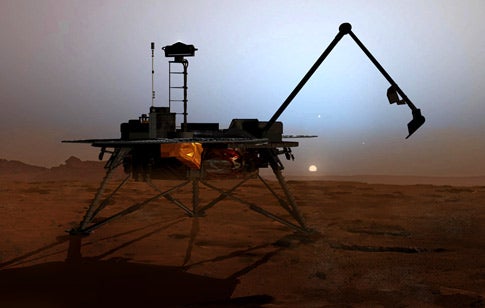Probes seeking life on Mars must dig deeply into young craters, gullies, or recently exposed ice to have a chance of finding any living cells that were not annihilated by radiation, researchers report in a new study. One promising place to look for them is within the ice at Elysium, site of a recently discovered frozen sea, they say.
Current probes designed to find life on Mars cannot drill deeply enough to find living cells that may exist well below the surface, according to the study. Although these drills may yet find signs that life once existed on Mars, the researchers say, cellular life could not survive incoming radiation within several yards of the surface. This puts any living cells beyond the reach of today’s best drills.
“Finding life on Mars depends on liquid water surfacing on Mars,” Dartnell added, “but the last time liquid water was widespread on Mars was billions of years ago. Even the hardiest cells we know of could not possibly survive the cosmic radiation levels near the surface of Mars for that long.”
Unlike Earth, Mars is not protected by a global magnetic field or thick atmosphere, and for billions of years it has been open to radiation from space. The researchers developed a radiation dose model and quantified variations in solar and galactic radiation that penetrates the thin Martian atmosphere down to the surface and underground. They tested three surface soil scenarios and calculated particle energies and radiation doses both on the surface and at various depths underground, allowing them to estimate the survival times of any cells.
The team found that the best places to look for living cells on Mars would be within the ice at Elysium, because the frozen sea is relatively recent — it is thought to have surfaced in the last five million years — and so has been exposed to radiation for a relatively short period of time. Even here, though, any surviving cells would be out of the reach of current drills. Other ideal sites include young craters, because the recently impacted surface has been exposed to less radiation, and gullies recently discovered in the sides of craters. Those channels may have flowed with water in the last five years and brought cells to the surface from deep underground.











